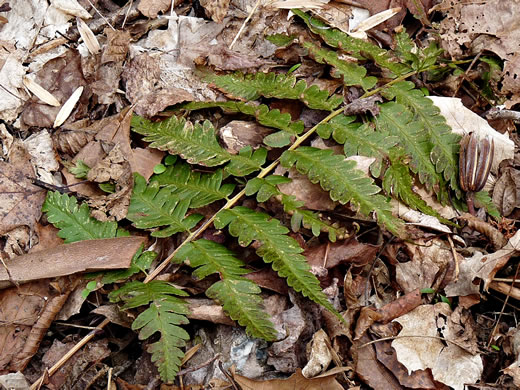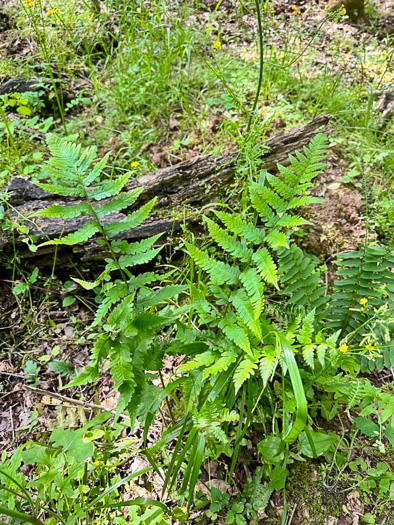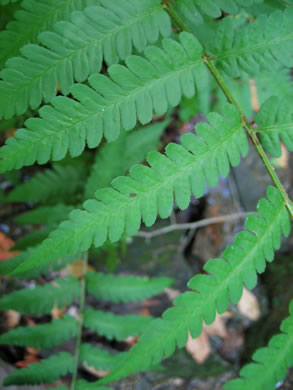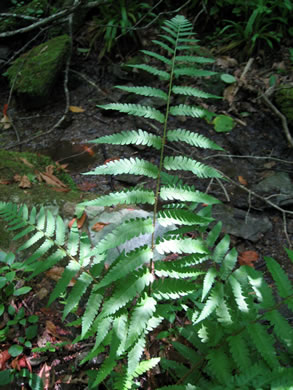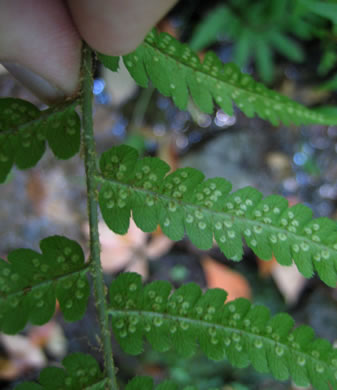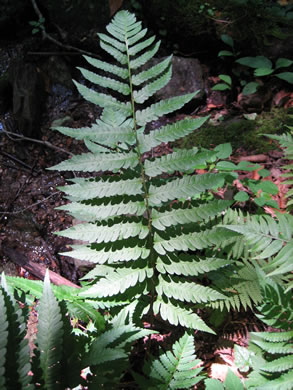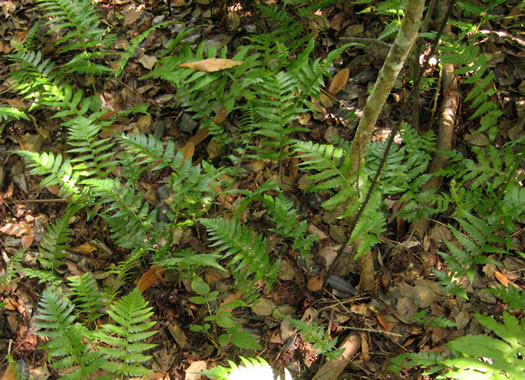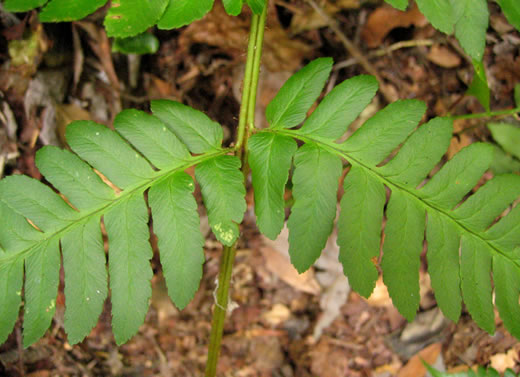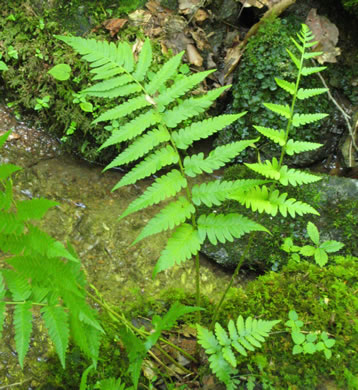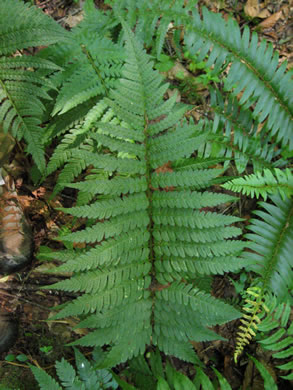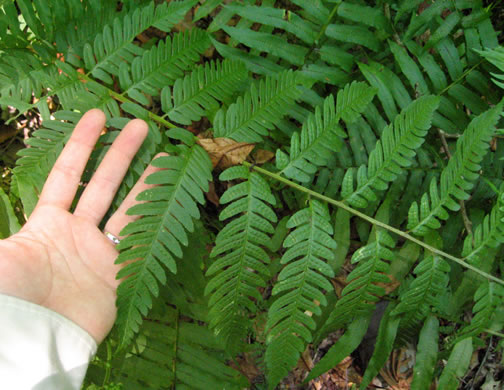Monilophytes (ferns): Leptosporangiate Ferns (true ferns): Polypodiales
WEAKLEY'S FLORA OF THE SOUTHEASTERN US (4/24/22):
Dryopteris celsa
FAMILY
Dryopteridaceae
Go to FSUS key
Dig deeper at SERNEC, a consortium of southeastern herbaria.
Learn more about Dryopteris from the Vascular Plants of North Carolina.
SYNONYMOUS WITH
PLANTS NATIONAL DATABASE:
Dryopteris celsa
FAMILY
Dryopteridaceae
SYNONYMOUS WITH Floristic Synthesis of North America. BONAP (Kartesz, 2021)
Dryopteris celsa
SYNONYMOUS WITH Flora of North America
Dryopteris celsa
SYNONYMOUS WITH The Ferns and Lycophytes of Texas (Diggs & Lipscomb, 2014)
Dryopteris celsa
SYNONYMOUS WITH VASCULAR FLORA OF THE CAROLINAS (Radford, Ahles, & Bell, 1968) 011-04-007:
Dryopteris celsa FAMILY Aspidiaceae
SYNONYMOUS WITH Britton & Brown Illus Flora of Northeast US & adjacent Canada (Gleason, 1952)
Dryopteris goldiana ssp. celsa
SYNONYMOUS WITH Ferns of the Southeastern States (Small, 1938)
Dryopteris atropalustris
SYNONYMOUS WITH Ferns of the Southeastern States (Small, 1938)
Dryopteris celsa
COMMON NAME:
Log Fern
To see larger pictures, click or hover over the thumbnails.
Emily B. Sessa ebs_dcelsa_0867
June
Pinnae long, tapering, deeply lobed. Lower pinnae narrowed at base, per Peterson Field Guide to Ferns of Northeastern and Central North America.
Emily B. Sessa ebs_dcelsa_0883
June
Sori round, medial to near midveins. Indusia peltate, kidney-shaped, per Field Guide to the Ferns and Other Pteridophytes of Georgia (Snyder & Bruce, 1986).
Emily B. Sessa ebs_dcelsa_0950
June
Blade oblong, slightly narrowed at base and gradually tapering at tip, per Field Guide to the Ferns and Other Pteridophytes of Georgia (Snyder & Bruce, 1986).
Emily B. Sessa ebs_dcelsa_4834
June
Log fern is a polyploid between D. goldiana and D. ludoviciana, per No seeds, no fruits, no flowers: No problem. Adventures in Fern Biology (Sessa).
WEAKLEY'S FLORA OF THE SOUTHEASTERN US (4/24/22):
Dryopteris celsa
FAMILY
Dryopteridaceae
SYNONYMOUS WITH
PLANTS NATIONAL DATABASE:
Dryopteris celsa
FAMILY
Dryopteridaceae
SYNONYMOUS WITH
Floristic Synthesis of North America. BONAP (Kartesz, 2021)
Dryopteris celsa
SYNONYMOUS WITH
Flora of North America
Dryopteris celsa
SYNONYMOUS WITH
The Ferns and Lycophytes of Texas (Diggs & Lipscomb, 2014)
Dryopteris celsa
SYNONYMOUS WITH
VASCULAR FLORA OF THE CAROLINAS (Radford, Ahles, & Bell, 1968) 011-04-007:
Dryopteris celsa
FAMILY
Aspidiaceae
SYNONYMOUS WITH
Britton & Brown Illus Flora of Northeast US & adjacent Canada (Gleason, 1952)
Dryopteris goldiana ssp. celsa
SYNONYMOUS WITH
Ferns of the Southeastern States (Small, 1938)
Dryopteris atropalustris
SYNONYMOUS WITH
Ferns of the Southeastern States (Small, 1938)
Dryopteris celsa
If a search such as "Carex leptalea var. leptalea" doesn't deliver the results you want, try "Carex leptalea".
Or, to minimize chances of a misspelling, try just "Carex le".
Less is more: If "pencil flower" doesn't deliver the results you want, try "pencil".

